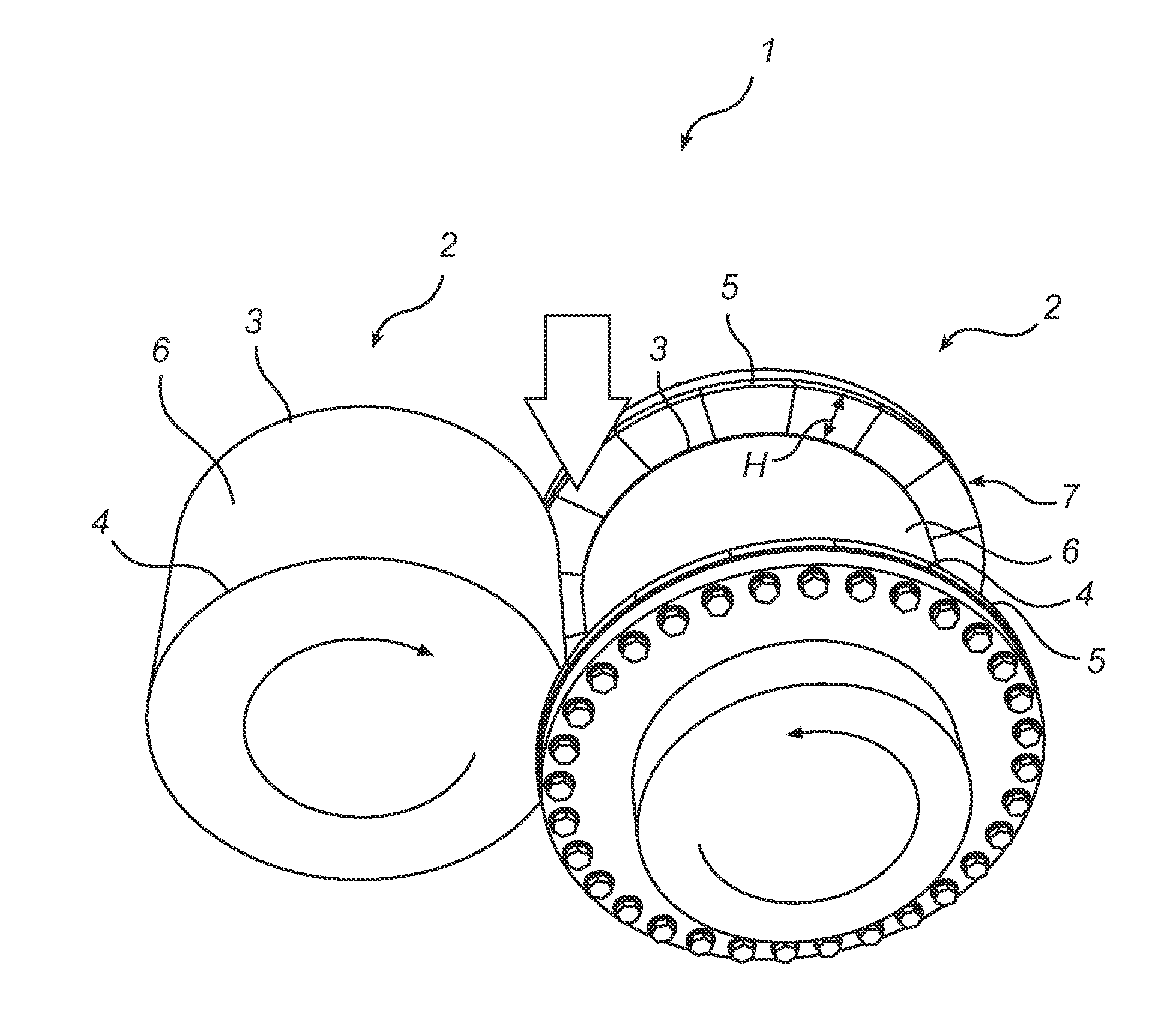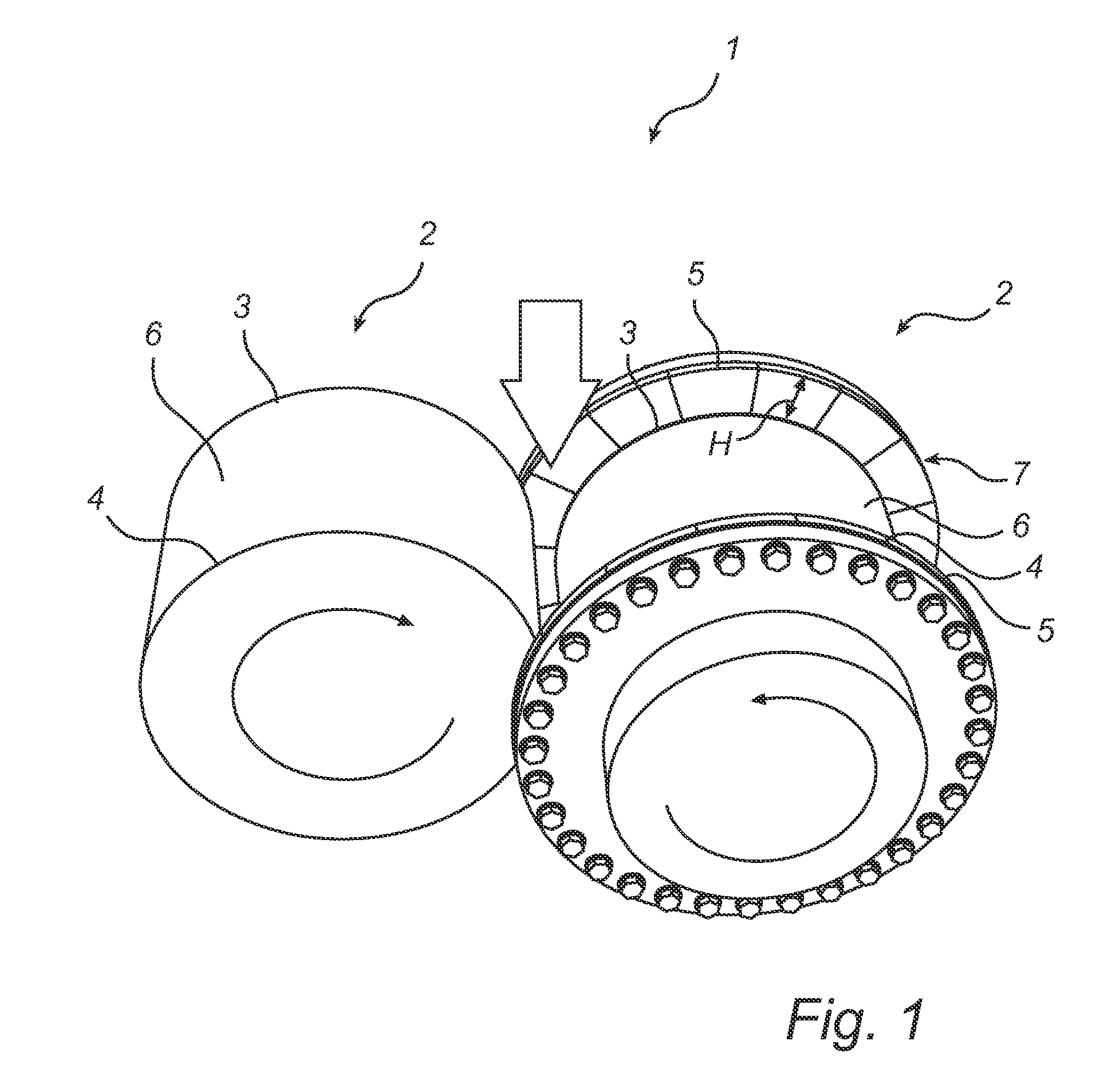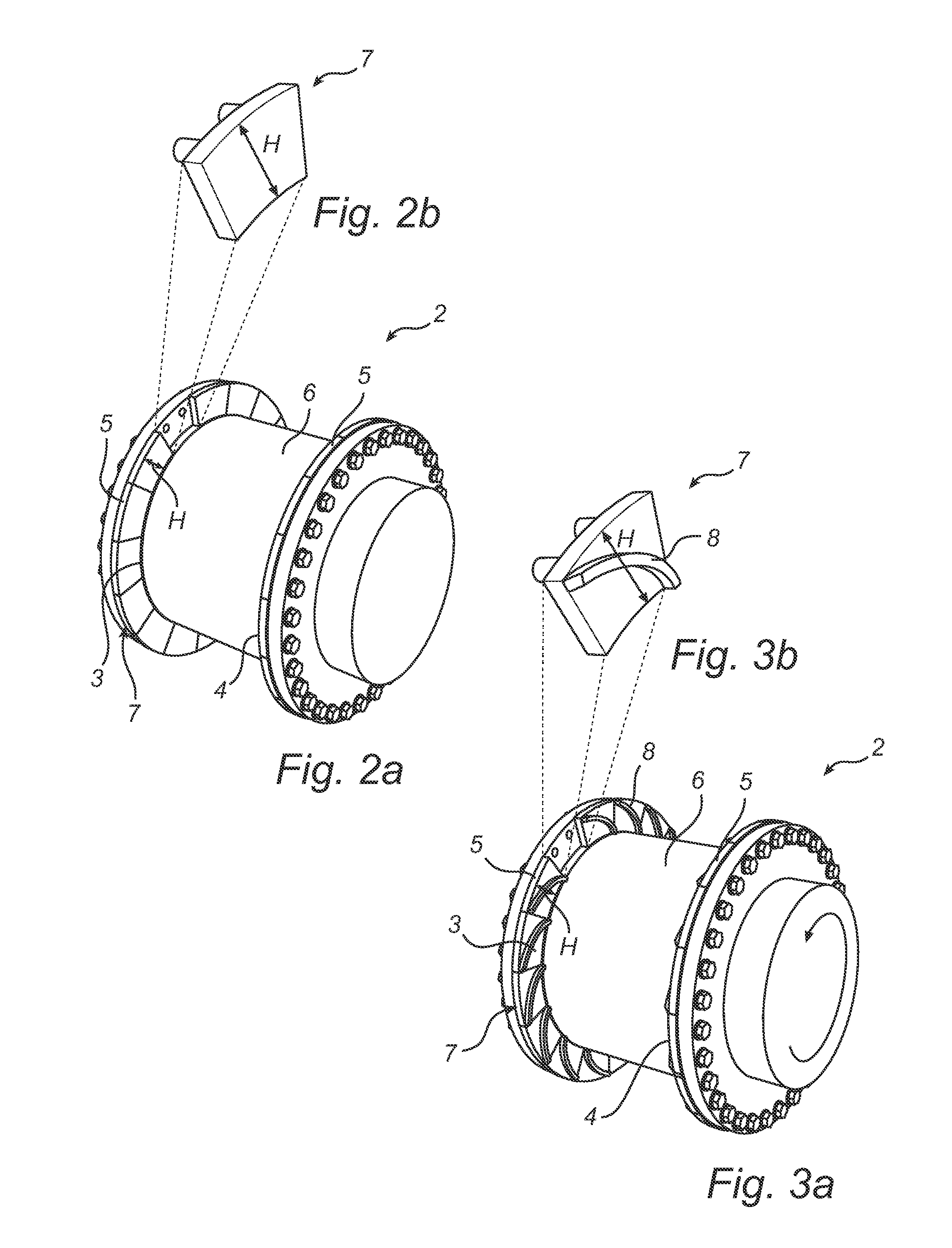Roller crusher having at least one roller comprising a flange
a technology of roller crusher and flange, which is applied in the field of roller crusher, can solve the problems of inability to vary the roller parameters to the desired extent, and reduce the crushing result at the edges of the roller, and achieve the effect of reducing the crushing resul
- Summary
- Abstract
- Description
- Claims
- Application Information
AI Technical Summary
Benefits of technology
Problems solved by technology
Method used
Image
Examples
second embodiment
[0027]In FIG. 3a, the roller 2 of the roller crusher 1 is illustrated. Here, the flanges 5 comprise a feeding structure 8 on the inside of the flanges 5. The structure 8 extends from the inside of the flange 5 towards the other end 3, 4 of the roller 2. The structure 8 is continuous and arcuate.
[0028]The structure 8 will increase the pressure on the material towards the gap between the rollers 2 at the edge of the roller 2. The material will engage with the structure 8 and be pressured towards and through the gap, i.e. the material will be choke-fed into the gap.
[0029]FIG. 3b illustrates a segment 7 of the flange 5 in FIG. 3a. Naturally, also the flanges 5 according to this second embodiment can be designed as one single unit.
third embodiment
[0030]In FIG. 4a, the roller 2 of the roller crusher 1 is illustrated. Here, the flanges 5 also comprise a feeding structure 8 on the inside. However, the structure 8 according to this embodiment is intermittent.
[0031]FIG. 4b illustrates a segment 7 of the flange 5 in FIG. 4a. Naturally, also the flanges 5 according to this third embodiment can be designed as one single unit.
[0032]In FIG. 5, a side view of the roller crusher 1 is illustrated in order to facilitate the understanding of the nip angle α. A first straight line has been drawn from the centre of the right roller 2 to and through a point on the left roller 2, at which point an active engagement between the left roller 2 and the material to be crushed is started. The nip angle α is measured between the horizontal plane extending through the centre of the left and right roller, and said first straight line. It is the smaller of the two possible angles which can be obtained in accordance with the definition presented above. I...
PUM
 Login to View More
Login to View More Abstract
Description
Claims
Application Information
 Login to View More
Login to View More - R&D
- Intellectual Property
- Life Sciences
- Materials
- Tech Scout
- Unparalleled Data Quality
- Higher Quality Content
- 60% Fewer Hallucinations
Browse by: Latest US Patents, China's latest patents, Technical Efficacy Thesaurus, Application Domain, Technology Topic, Popular Technical Reports.
© 2025 PatSnap. All rights reserved.Legal|Privacy policy|Modern Slavery Act Transparency Statement|Sitemap|About US| Contact US: help@patsnap.com



